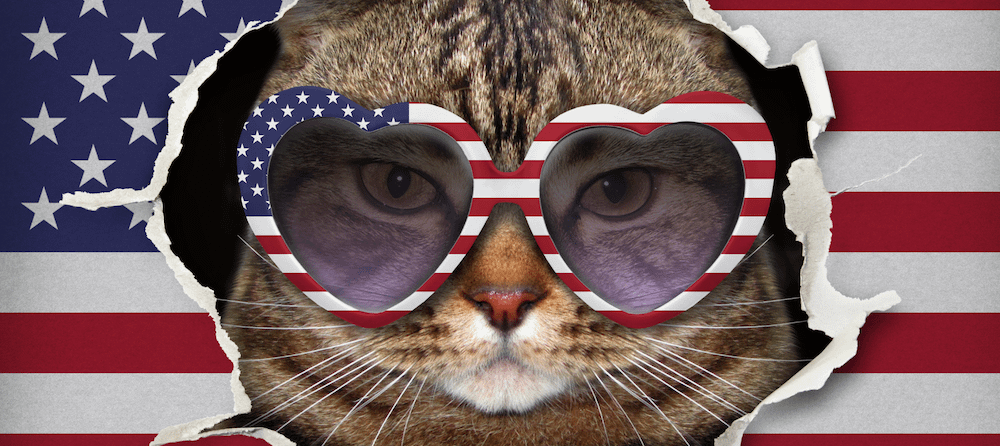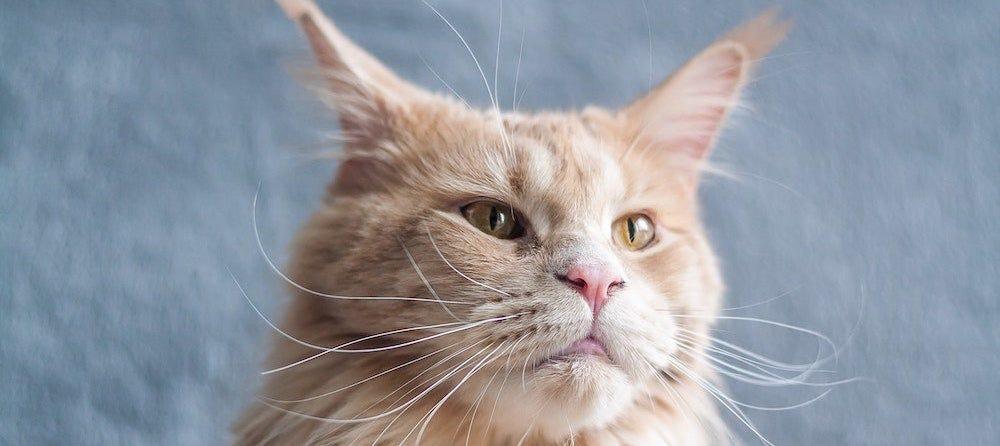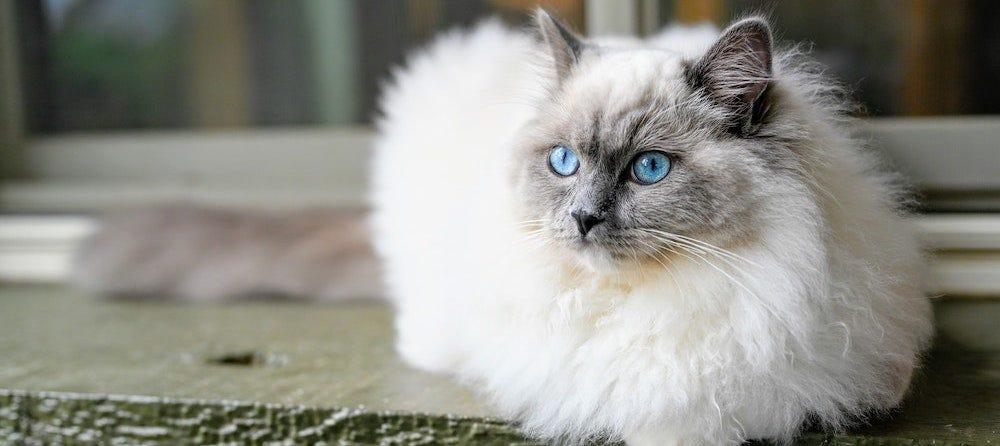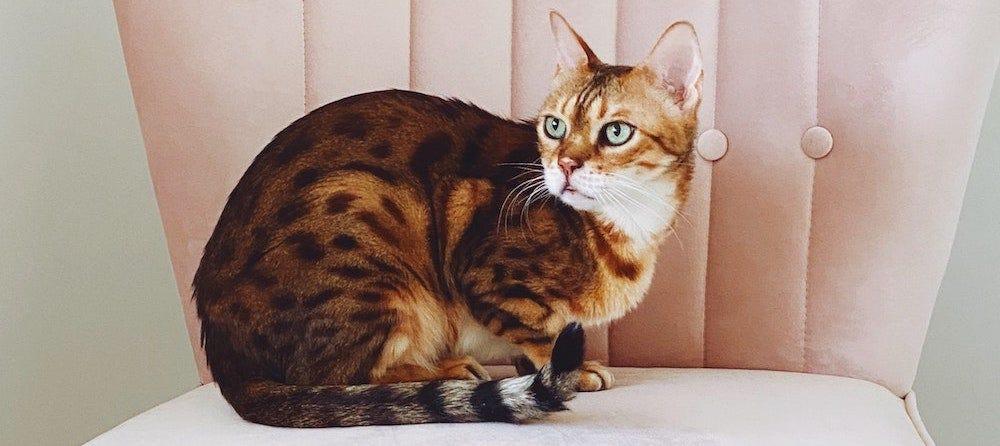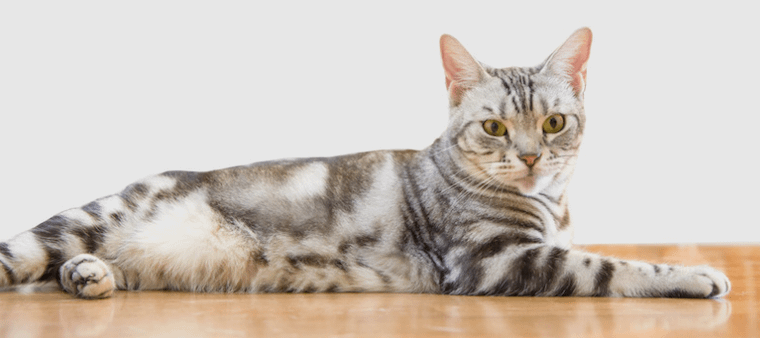It goes without saying that we love cats of all nations, heritage, and pedigree. Have you ever wondered where certain cats originated? Turns out, many of our most beloved breeds got their start right here in the USA. Check out our list of 12+ American cat breeds!
American cat breeds created by nature
The following American cats are naturally occurring, meaning they weren’t created through crossbreeding efforts by human breeders.
American Shorthair
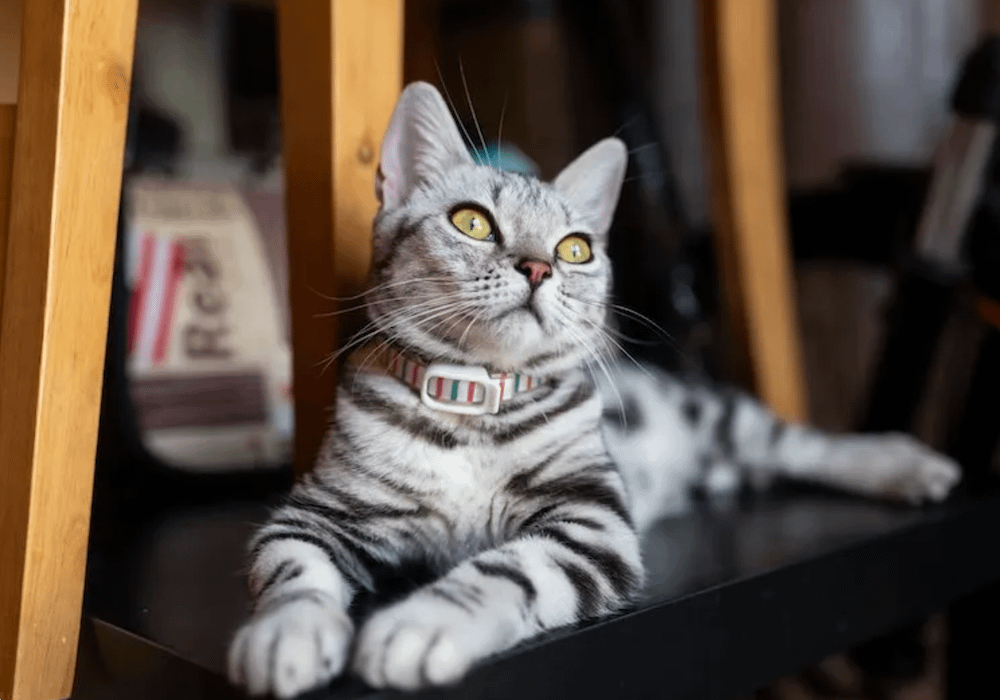
Although this breed’s ancestors arrived on the shores of the United States hundreds of years ago, the friendly, even-tempered kitty we know and love today is all-American. Many believe the working cats that would become the American Shorthair arrived with the Mayflower in 1620—or existed even earlier, with residents of the Jamestown Colony.
These cats worked to keep rodents and vermin out of barns and away from their family’s houses. Over the last few hundred years, the cats that had the strongest hunting instincts and the best endurance to cold New England winters were the ones to persist.
In the 1800s, the Shorthair cat was first accepted into the American Cat Fancier, but their name changed several times. They started as Shorthairs, graduated to Domestic Shorthair, and then ended up as American Shorthair.
Maine Coon
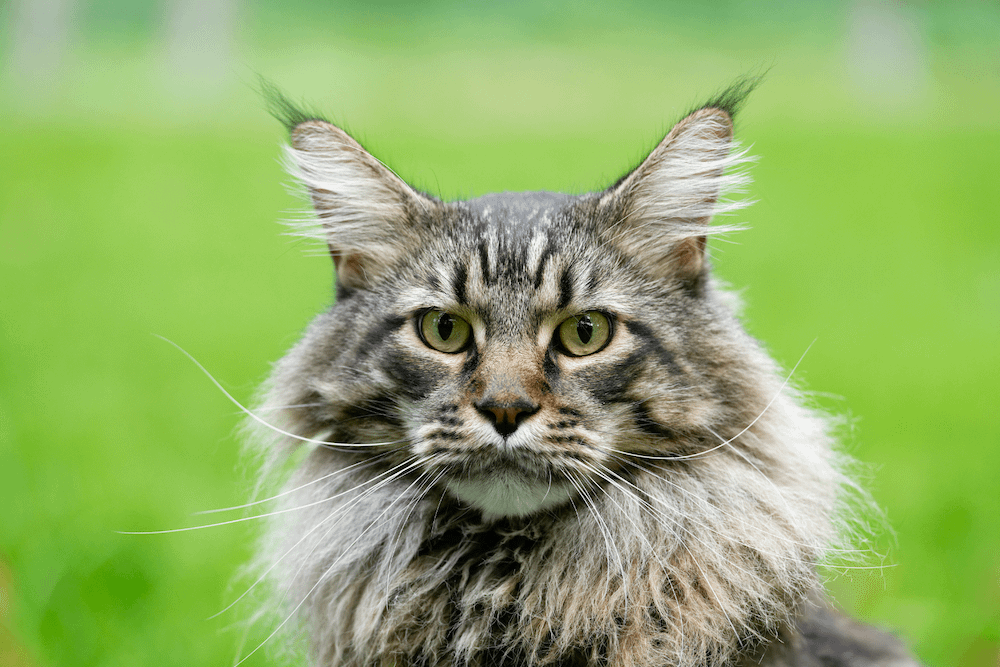
The mighty Maine Coon developed more than a century ago (perhaps as early as the 1600s) in the wilderness of Maine; in fact, they are the official state cat of Maine. The Maine Coon cat probably came from an encounter between a domesticated American Shorthair cat and a long-haired cat from overseas. They adapted to the cold winters and survived to become the lovable cats we know today.
When the Maine Coon cat was established in the late 1800s, they soon became useful as working cats that kept rats and mice out of barns. These cats are large and often polydactyl, making them impressive hunters. Of course, there was the occasional exception: A tabby Maine Coon named Cosey won “Best Cat” at New York’s Madison Square Garden’s 1895 cat show. Today, Maine Coons are one of the most popular cat breeds on the planet.
American Curl
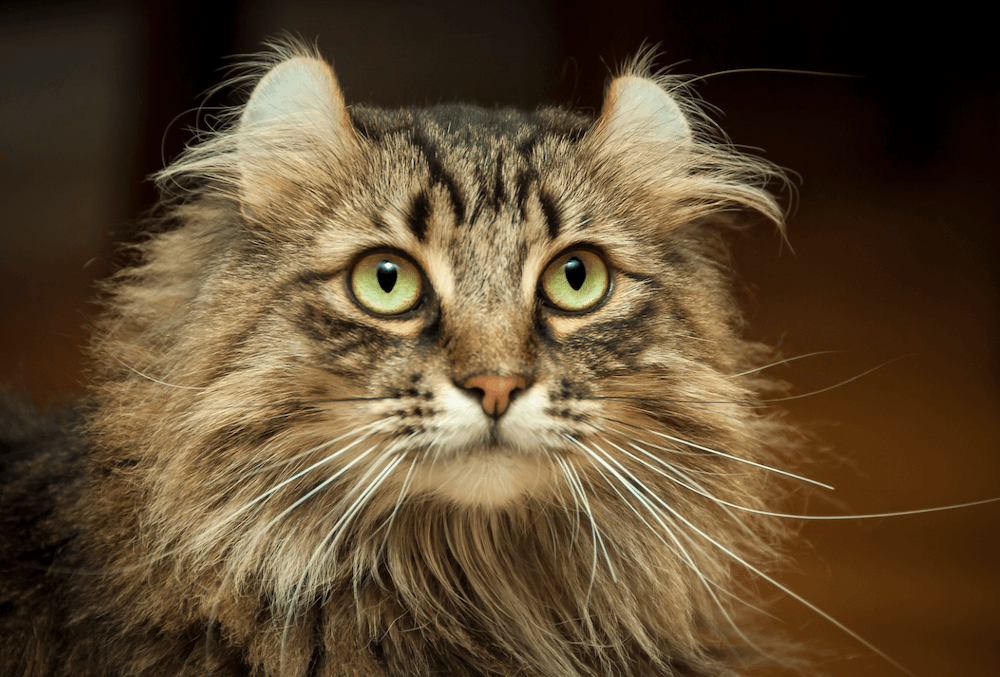
The American Curl, whose ears curl back due to a random genetic mutation, is one of the most recent natural cat breeds to arise in the U.S. In 1981, two curled-ear kittens ended up with a Lakewood, California, couple named Joe and Grace Ruga. Although one of these cats sadly passed away, the surviving long-haired female went on to mate with neighborhood cats that resulted in litters with some curled-ear kittens, and some straight-eared kittens.
There were short-haired and long-haired American Curl kittens all around, and a woman named Nancy Keister fell in love with the breed. She had them registered, and these interesting-looking cats were quickly promoted as a new breed. They were first recognized by the Cat Fanciers Association (CFA) in 1986 and The International Cat Association in 1987. They’re also the first cat breed to have two coat lengths recognized by the CFA!
Selkirk Rex
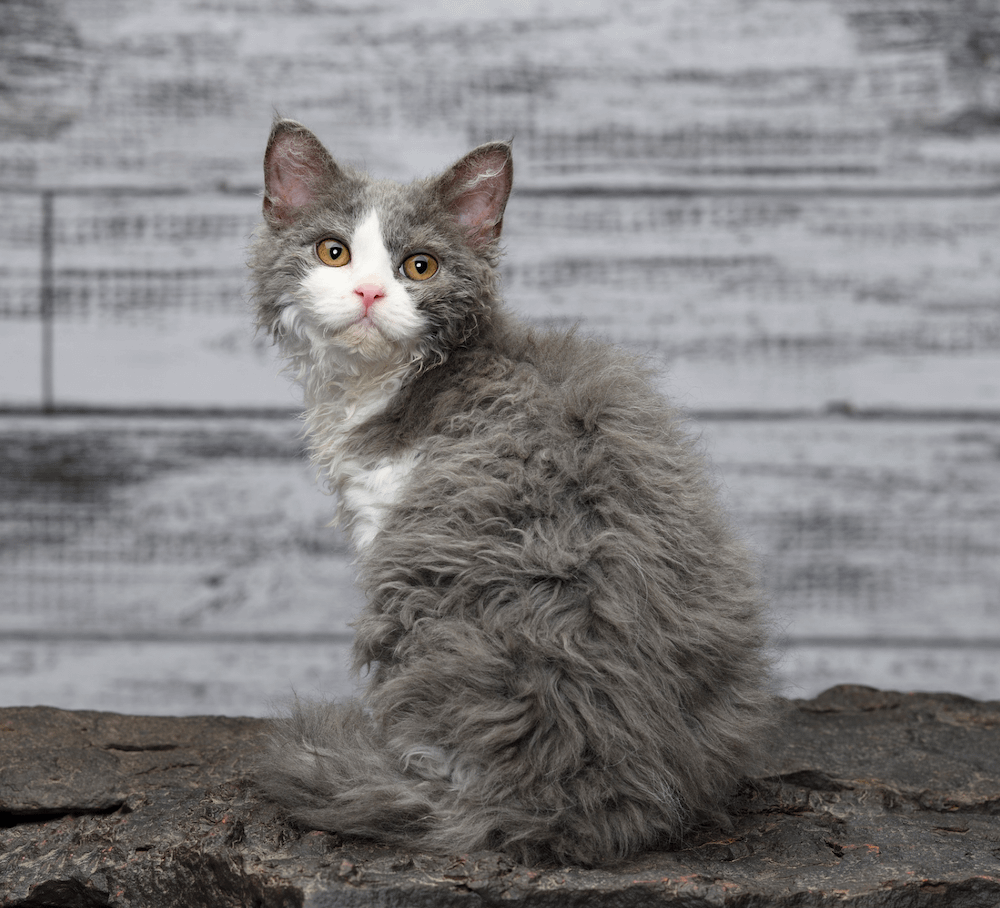
The Selkirk Rex was first identified in the United States in the late 1980s. Jeri Newman, who bred Persian cats in Montana, discovered a curly, fluffy kitten born from a feral mother in a nearby shelter. Jeri named her Miss DePesto after her extreme pestering for attention. When Miss DePesto was old enough, she was bred to one of Jeri’s black Persians. Out of six kittens, three of them had curly coats similar to Miss DePesto’s. Jeri then named the cat after her stepfather. The Selkirk Rex is the only cat named after a single person.
Today’s Selkirk Rexes can have long or short coats, and can give birth to either straight- or curly-haired kittens. Those with curly coats lose their curls in the first months after birth. But at 8 to 10 months old, their curls return and increase in curliness until 2 years of age.
American Bobtail
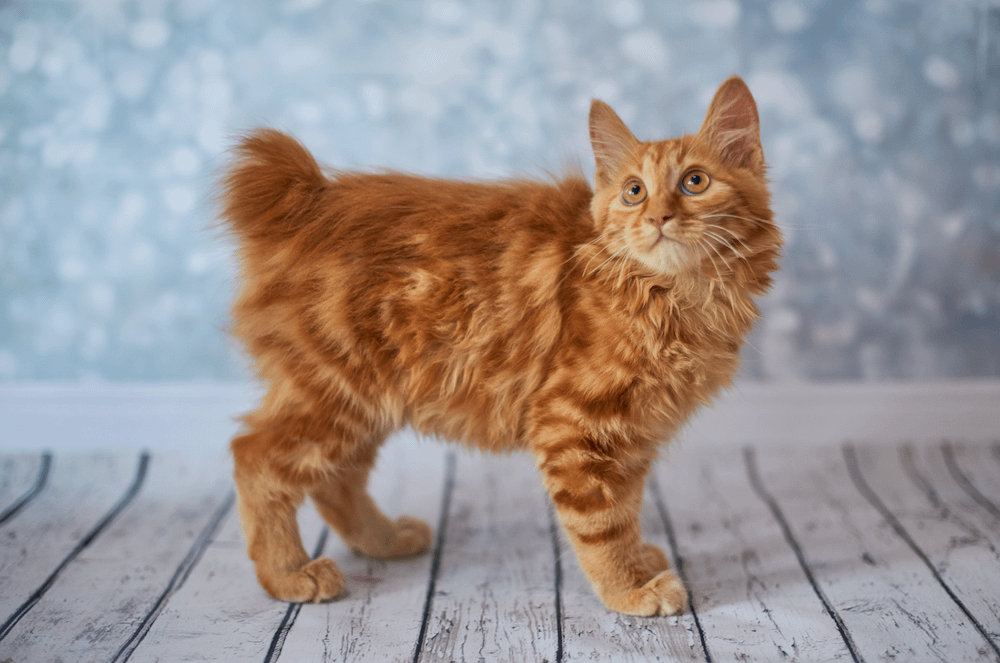
Because the bobbed tail is a genetic mutation that can happen randomly in any cat breed, the American Bobtail did not become its own recognized breed until the 1960s. This relatively new breed came from feral domestic cats with natural bobtails.
In the 1960s, John and Brenda Sanders found a bobbed-tail cat at an Arizona motel and brought him to their home in Iowa. This cat bred with the couple’s female seal-point Siamese cat, leading to a litter of bobtail kittens with sweet temperaments. Other reputable breeders took an interest in this adorable adaptation and followed suit.
Through more selective breeding, the “wild” markings, shortened tails, and compact bodies became preferred by breeders of the American Bobtail.
LaPerm
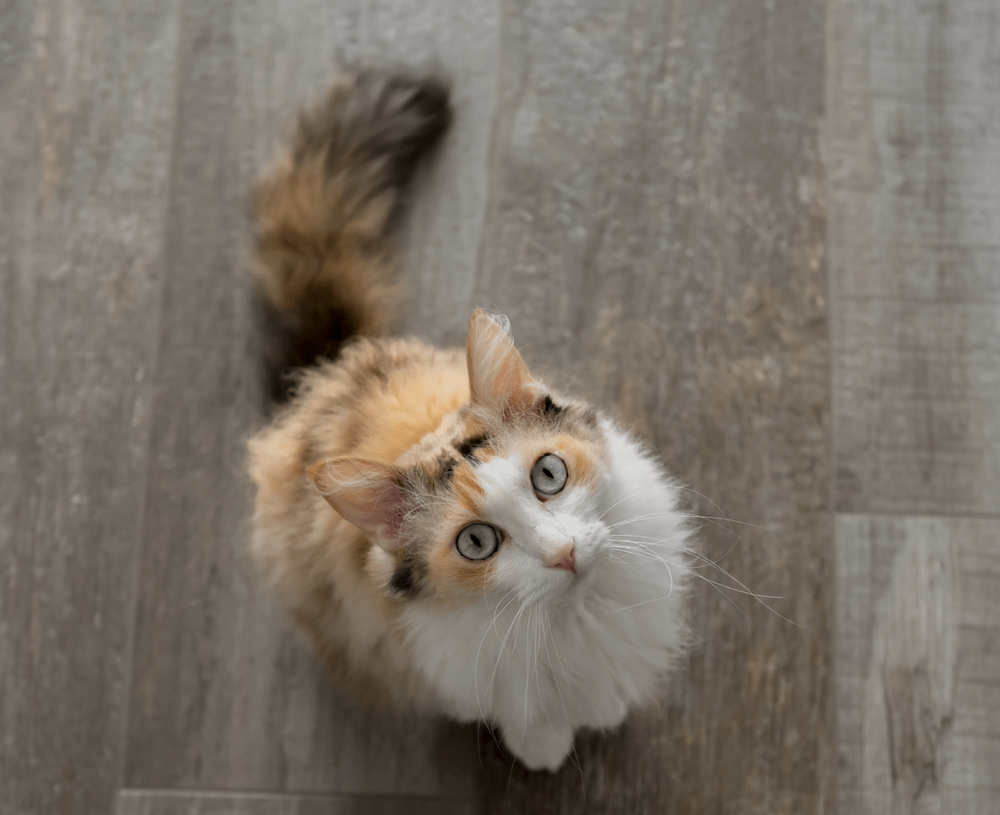
The LaPerm cat breed was a happy surprise born on an American farm. In 1982, a brown tabby barn cat gave birth to a litter of six kittens. One kitten was completely bald, and at eight weeks old, started to grow soft, wavy fur. The farm’s owners named this kitten Curly. Once she was old enough to reproduce, Curly had a litter of five tabby kittens. All of them were born bald but developed the same curly coat several months after being born.
Curly continued to breed on the farm, resulting in a rapid increase of curly-haired kittens. One of her owners, Linda Koehl, entered the curly-haired cats into the Cat Fanciers’ Association (CFA) and, when registering them, came up with the name LaPerm.
American Wirehair
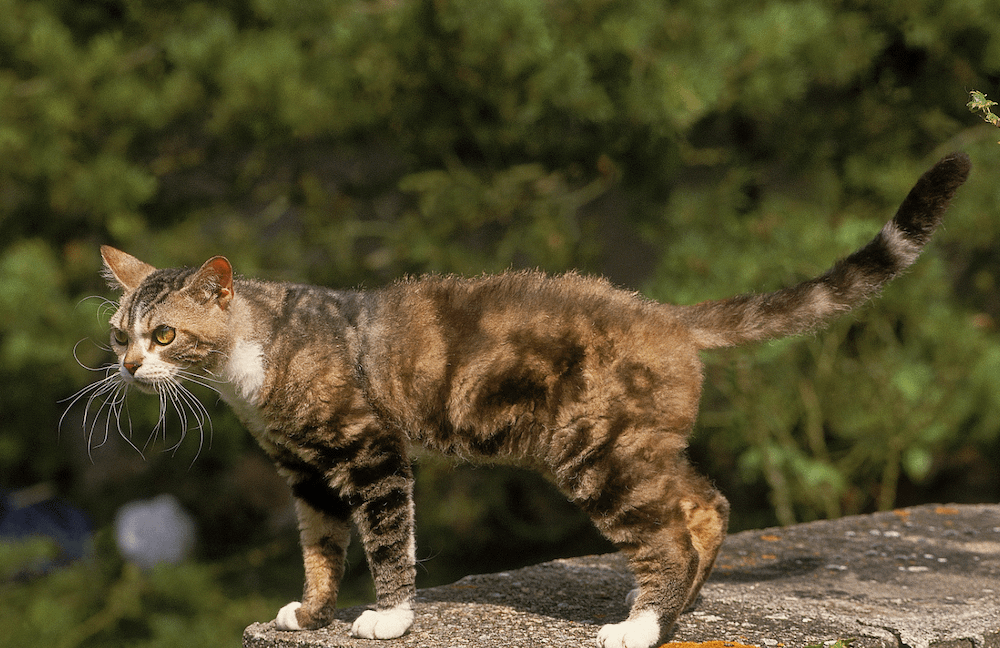
The American Wirehair came about in upstate New York in the 1960s. A Domestic Shorthair barn cat gave birth to a litter that included one orange and white kitten with a wiry coat. When this kitten was brought to nearby reputable breeder Joan O'Shea, she was struck by the wiry coat as well. She attempted to breed this cat with her American Shorthairs.
After breeding the cat with her American Shorthairs, Joan realized that the wiry hair gene was a rare and spontaneous mutation but a dominant one. Half of the kittens that are born to a wiry-haired cat will be born with wiry coats as well. Yet, this mutation has not been reported in any other country in the world, so it’s very rare. The Cat Fanciers’ Association (CFA) accepted the American Wirehair breed in 1967.
Lykoi
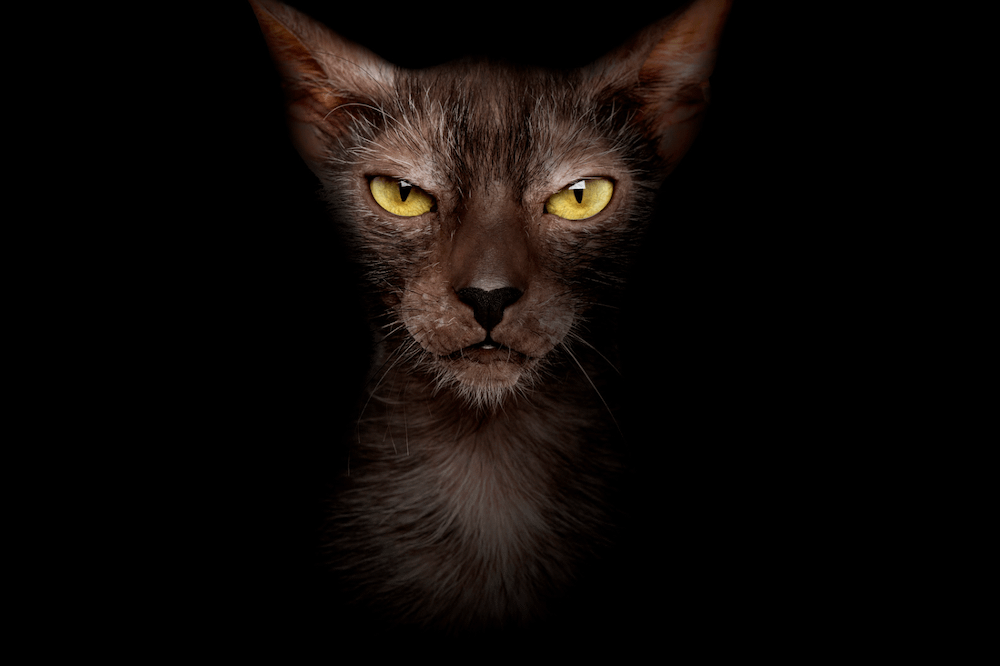
The Lykoi cat has a naturally occurring gene in the feral cat population that results in partial hairlessness, rather like… werewolves! The Lykoi breed was founded in 2011 by Johnny Gobble, Brittney Gobble, and Patti Thomas when two unrelated litters of kittens were presented as unique cats. The founders made sure that the cat’s unusual appearance was not caused by sickness or disease.
Because the Lykoi cats are derivatives of feral cats, they have retained their strong prey drive. However, when properly socialized, they are as loving and friendly with their humans as the next cat breed.
American cat breeds created by man
Many of today’s most popular cat breeds are the result of human interference. Let’s take a look at some of these man-made American cat breeds.
Ragdoll
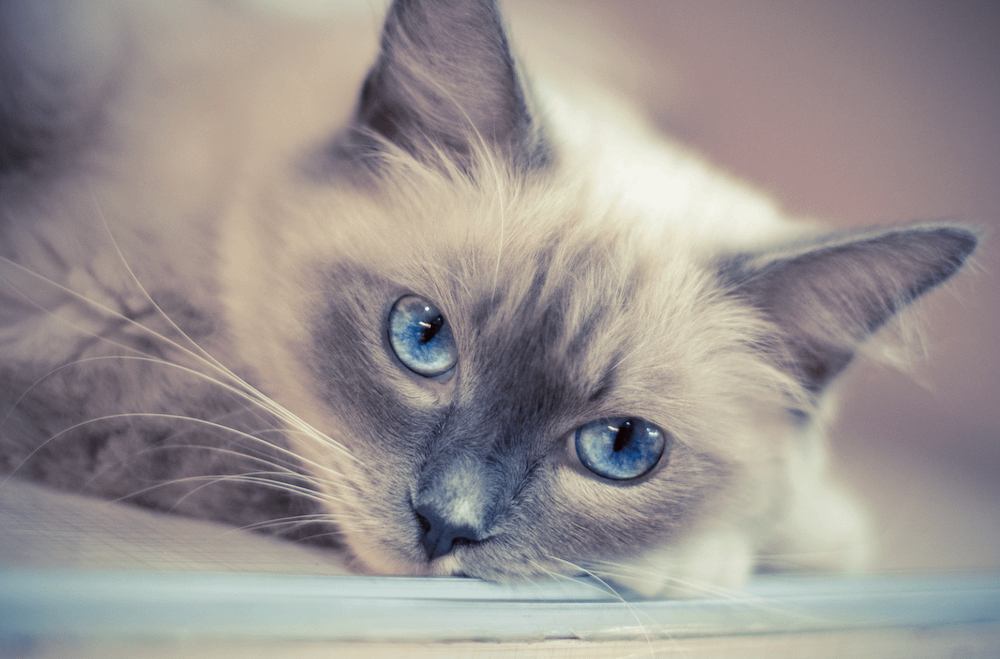
The sweet, fluffy Ragdoll cat originated in Riverside, California, in the 1960s from a lovely, partially feral cat named Josephine. Ann Baker, a Persian cat breeder, came across the free-roaming Josephine, a long-haired white cat. Josephine had a litter of kittens, three of which helped create the first official Ragdoll cats. Ann Baker then worked to make the features of the Ragdoll permanent.
The male kitten, named Daddy Warbucks, was born with a cream-colored coat, dark points, and white mittens. He’s considered the first Ragdoll and was mated with a second-generation kitten to produce two other offspring. Daddy Warbucks and his offspring were all accepted as the first registered Ragdoll cats with the National Cat Fanciers' Association (NCFA) in 1966. From there, the breed blossomed and skyrocketed in popularity.
Bengal
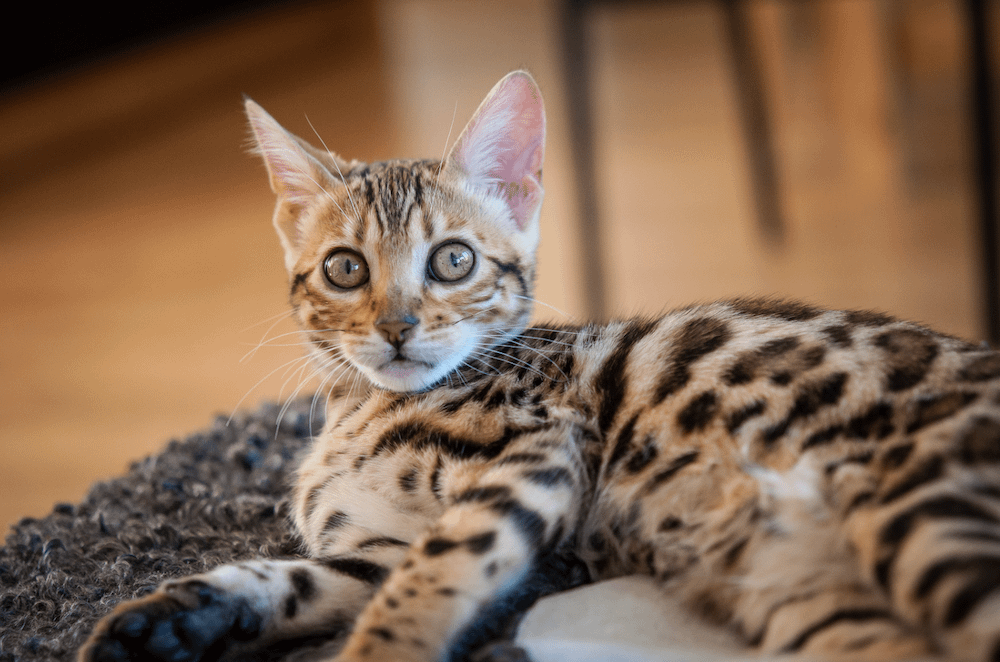
The Bengal cat was created when a domestic cat and an Asian leopard mated at the hands of breeder Jean Mill in the 1960s. When the male domestic cat and Asian leopard paired up, they were able to mate and have a litter of kittens, to Jean's surprise. Only one survived, and that was KinKin, a female hybrid of her two parents.
KinKin was thought to be sterile, considering the cross-breeding between a domestic and wild cat, but she was then mated with her father and delivered two kittens, one with leopard spots and one all black. By 1985, the world accepted the Bengal cat as a new breed. The only real stipulation is that a Bengal cat must be at least four generations removed from the Asian leopard cat for them to be considered safe pets.
Savannah
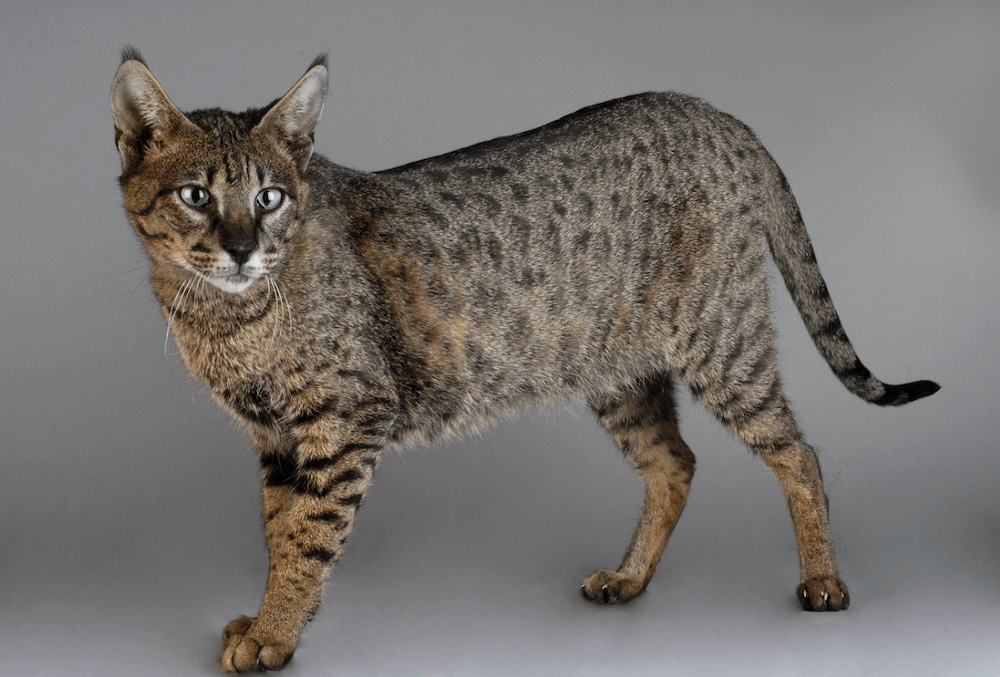
The Savannah cat was developed in the U.S. in 1986 after breeders crossed a female Siamese domestic cat with a male African serval. Other spotted cat breeds that contributed to today’s Savannah cat include the Bengal, Egyptian Mau, Oriental Shorthair, and Domestic Shorthair tabbies.
Savannah cats have “F” or “filial” ratings specifying how many generations removed from the African serval that particular cat is. In the case of an F1 Savannah cat, the highest number, you’re looking at a first generation domestic Savannah. The F1 Savannah cat is considered 50% wild. As the filial number increases (F2, F3), the measure of wild blood (serval DNA) decreases. F1 Savannah cats are illegal in many U.S. states.
Munchkin
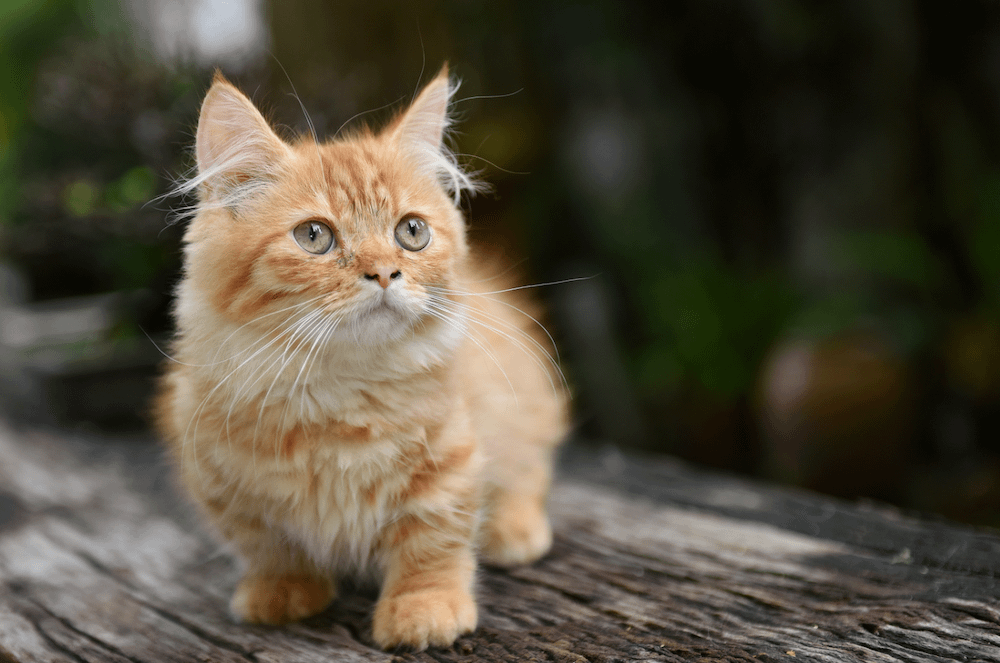
Short legs on cats is a natural genetic mutation that has likely occurred for centuries. However, the origin story for the Munchkin cat breed begins in 1980s Louisiana with a cat called Blackberry. A music teacher named Sandra Hochenedel found a pregnant cat, Blackberry, who had very short legs. Blackberry’s litter consisted of half long-legged cats and half short-legged cats. Sandra decided to name them Munchkin cats, after the people in "The Wizard of Oz."
Eventually it was discerned that the short-legged gene is autosomal dominant, meaning it is not sex-linked and will express itself whether it’s inherited from one or both parents. When inherited from both parents, this gene is lethal; the embryos will die in the womb. This means that Munchkin cats cannot be bred with each other, and instead must be bred with regular domestic cats.
Not all cat associations believed Munchkin cats should be deemed a new breed because it might promote unethical breeding practices. The genetics committee of The International Cat Association (TICA) advocated for this cat’s acceptance, while the Cat Fanciers Association does not support this breed.
Other man-made American cat breeds
A number of other exceptional kitties have originated in the USA at the hands of breeders, including the following:
We hope you’ve enjoyed learning about American cat breeds!
Photo credit: American Shorthair - Joey Huang via Unsplash
